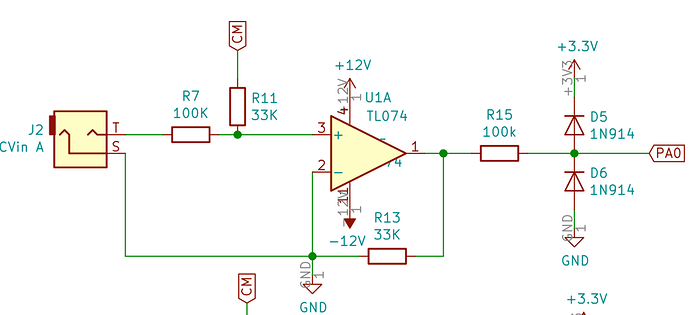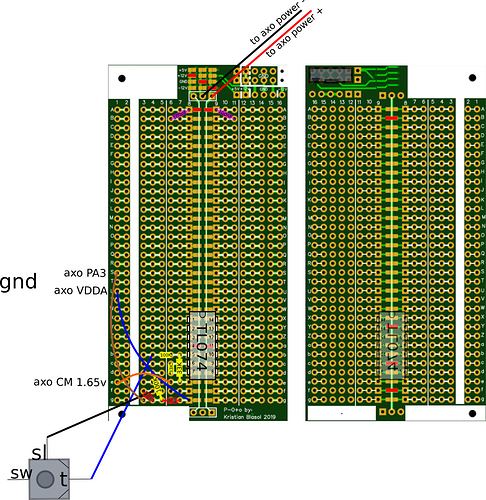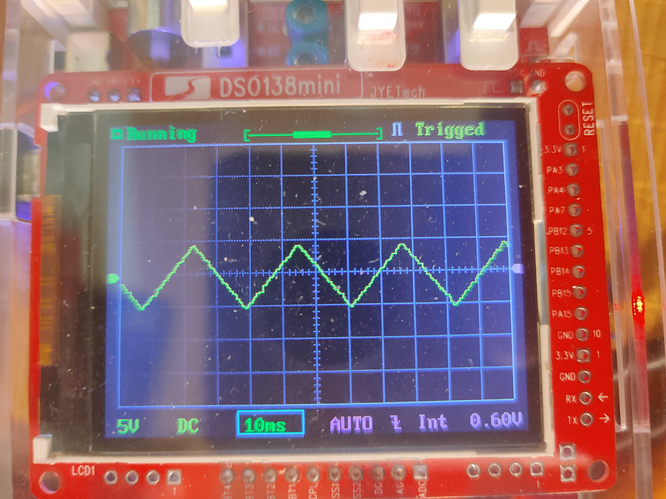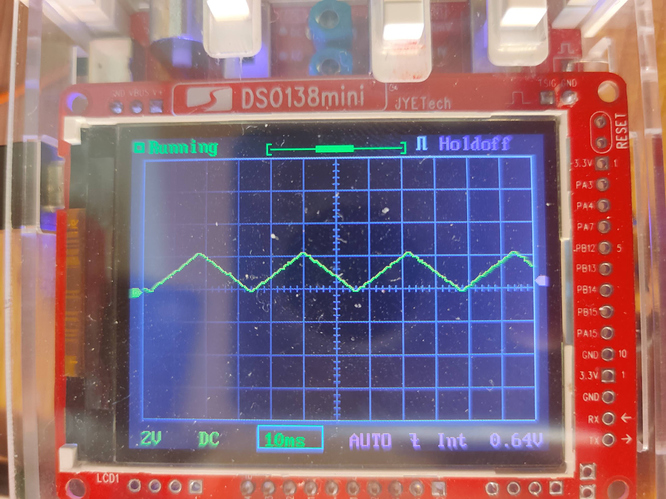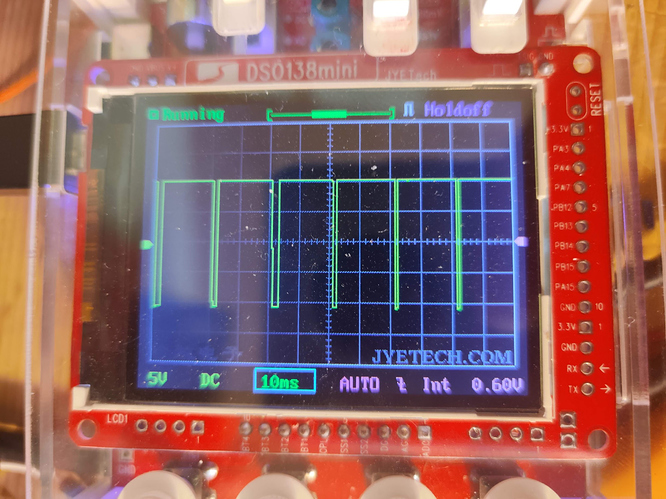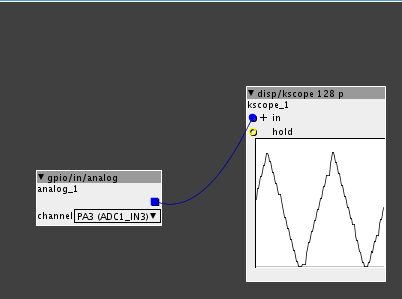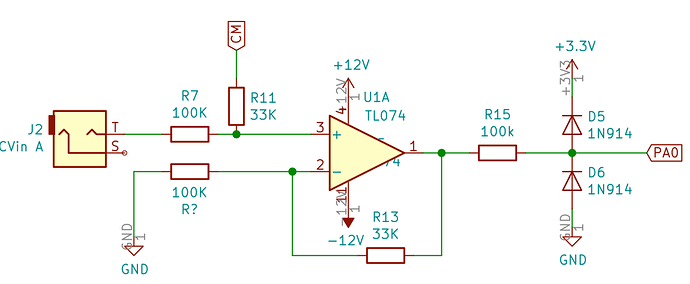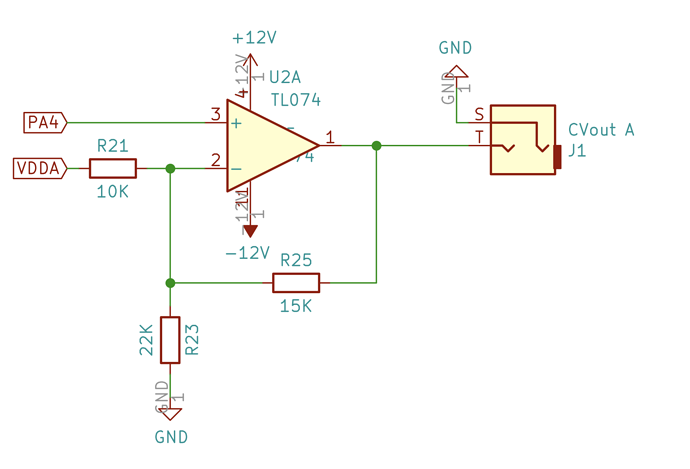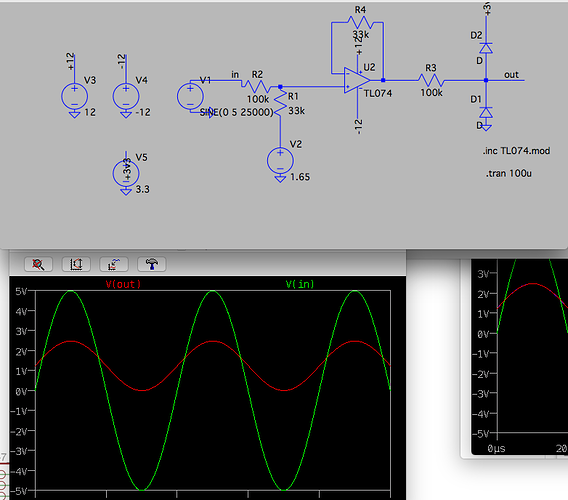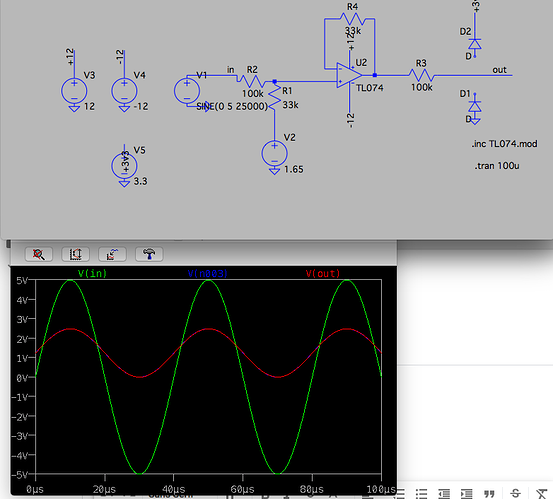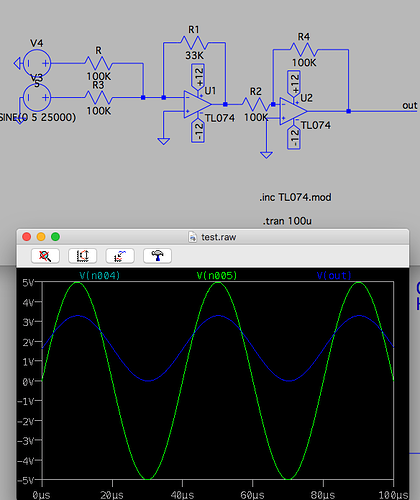Hi I'm trying to make a design for a CV-in / CV-out addon board for axo (for easy prototyping of AxoBased modules). I had a breadboard design based on the schematics found elsewhere on the forum. I changed the opamp to a TL074 (pdf) because thatis what I had in my workshop.
so for CV in I have this:
I tested this on a breadboard and used an arduino to test this (so I would not fry my axo) and this all worked. So transfered it to a protoshield. But it sdoes not work. Now instead of scaling it down, the amp is scaling up, and forgetting all about the 1.65V offset. My signal is almost centered going from -11V to +10V. I have clipping diodes so the axo pin does not get this (-0.6V to 3.3V) but I don't know what is wrong.
Why does an opamp suddenly scale up?
some more info.
this is my build layout
I'm feeding it a -5v/+5v triangle wave (measured at b3)
It properly gets scaled and offset before going into the amp (measured at b8 (pin 5 of the TL074)
output before the diode clipping is
gnd is measured ok on every gnd point in the schematics
3.3V VDDA is ok
1.65V CM is OK
the resistors are OK
the axo is properly powered from the eurorack, and it works fine, gnd is connected
+12v is measured at a8 on pin 4
-12v is measured at a9 on pin 11
probably something stupid... any ideas?

